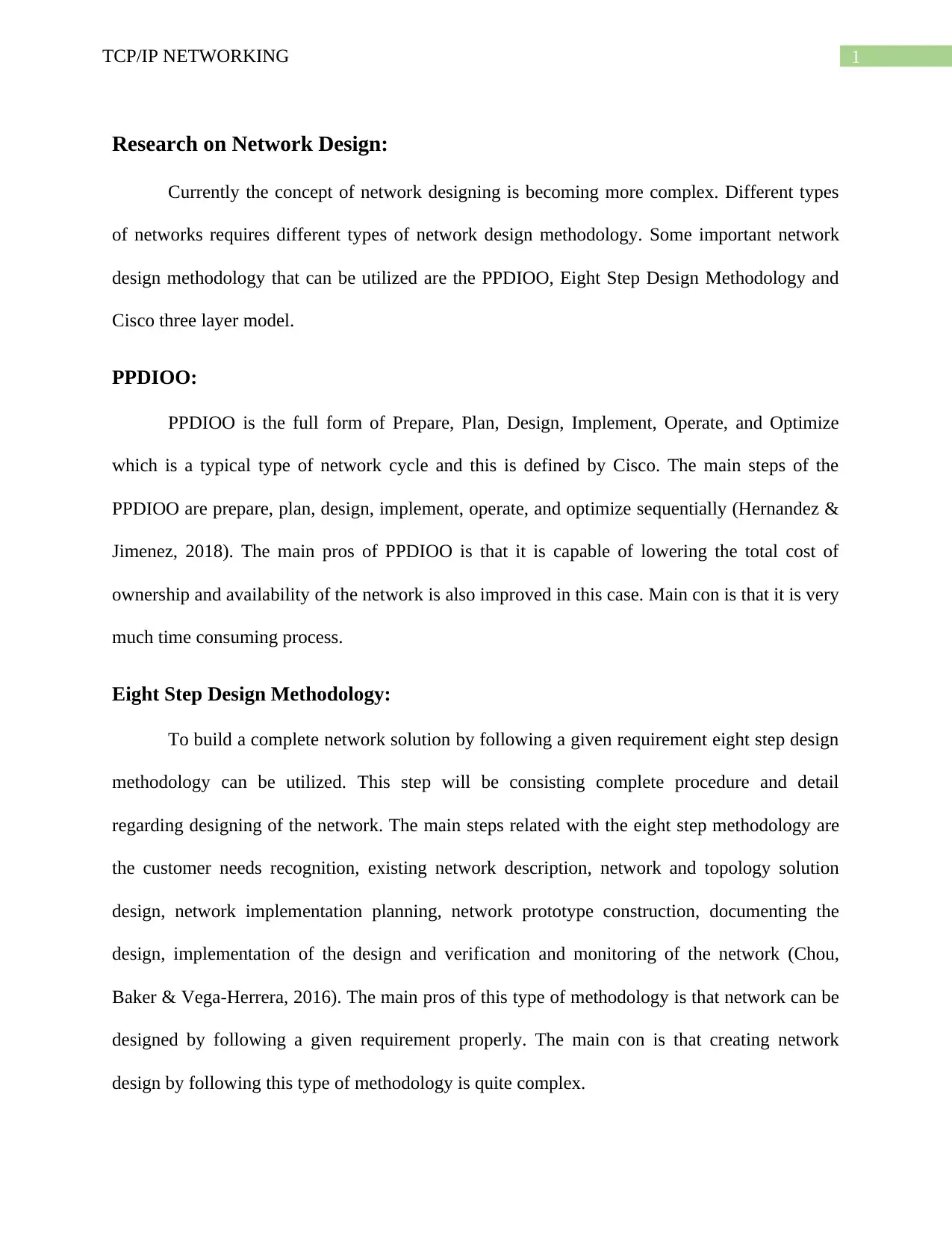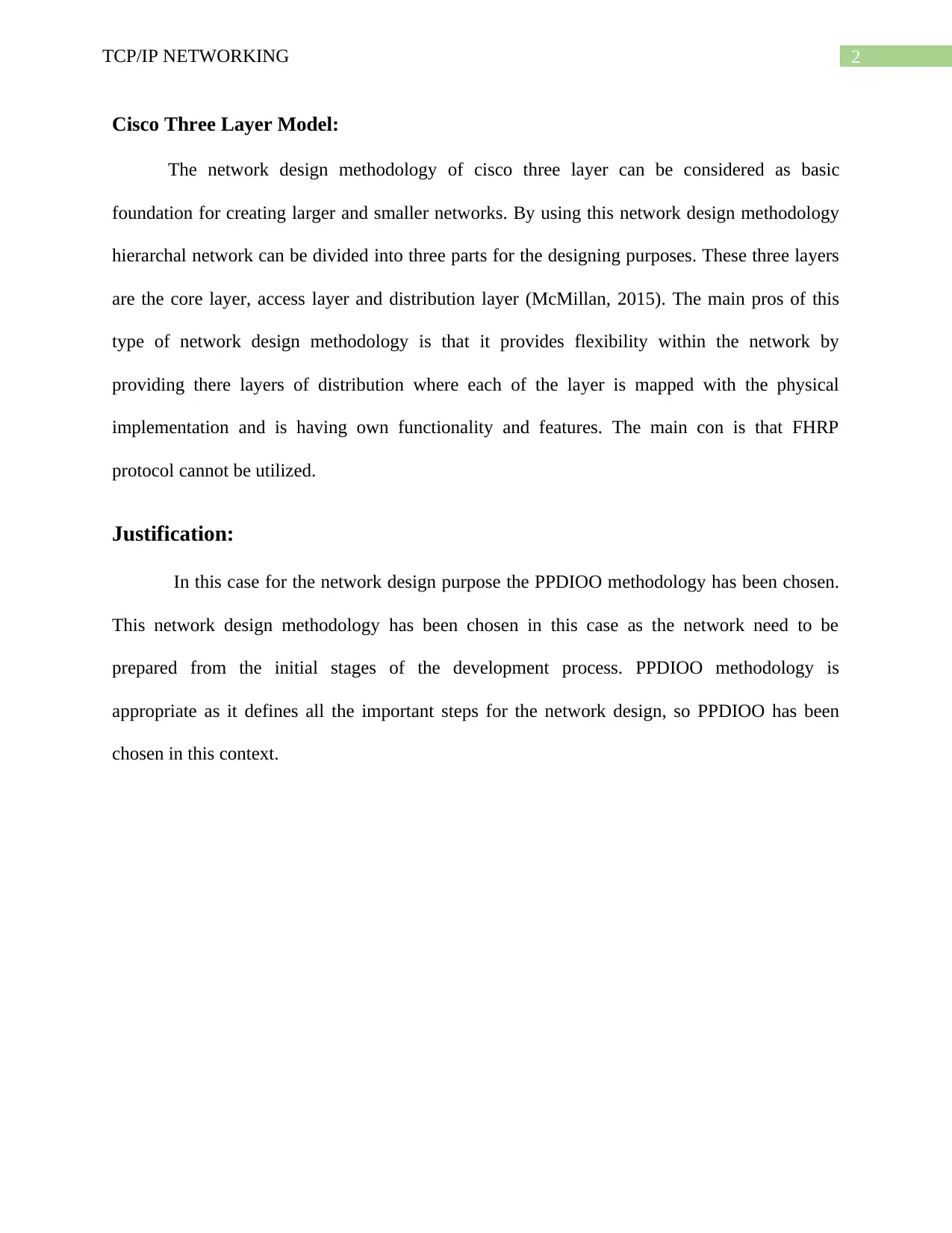Comparative Analysis of Network Design Methodologies: A Report
VerifiedAdded on 2022/11/29
|4
|617
|367
Report
AI Summary
This report provides a comparative analysis of network design methodologies, focusing on PPDIOO, Cisco's three-layer model, and the eight-step methodology. The document begins by introducing the concept of network design and its increasing complexity. It then delves into the specifics of each methodology, detailing their core components, advantages, and disadvantages. PPDIOO is presented as a comprehensive process for network design, while Cisco's three-layer model offers a hierarchical approach. The eight-step methodology provides a structured framework for network design. The report concludes by justifying the selection of PPDIOO for a specific network design scenario, emphasizing its suitability for handling the initial stages of development. The analysis includes references to relevant academic sources, providing a solid foundation for the comparisons made.
1 out of 4







![[object Object]](/_next/static/media/star-bottom.7253800d.svg)